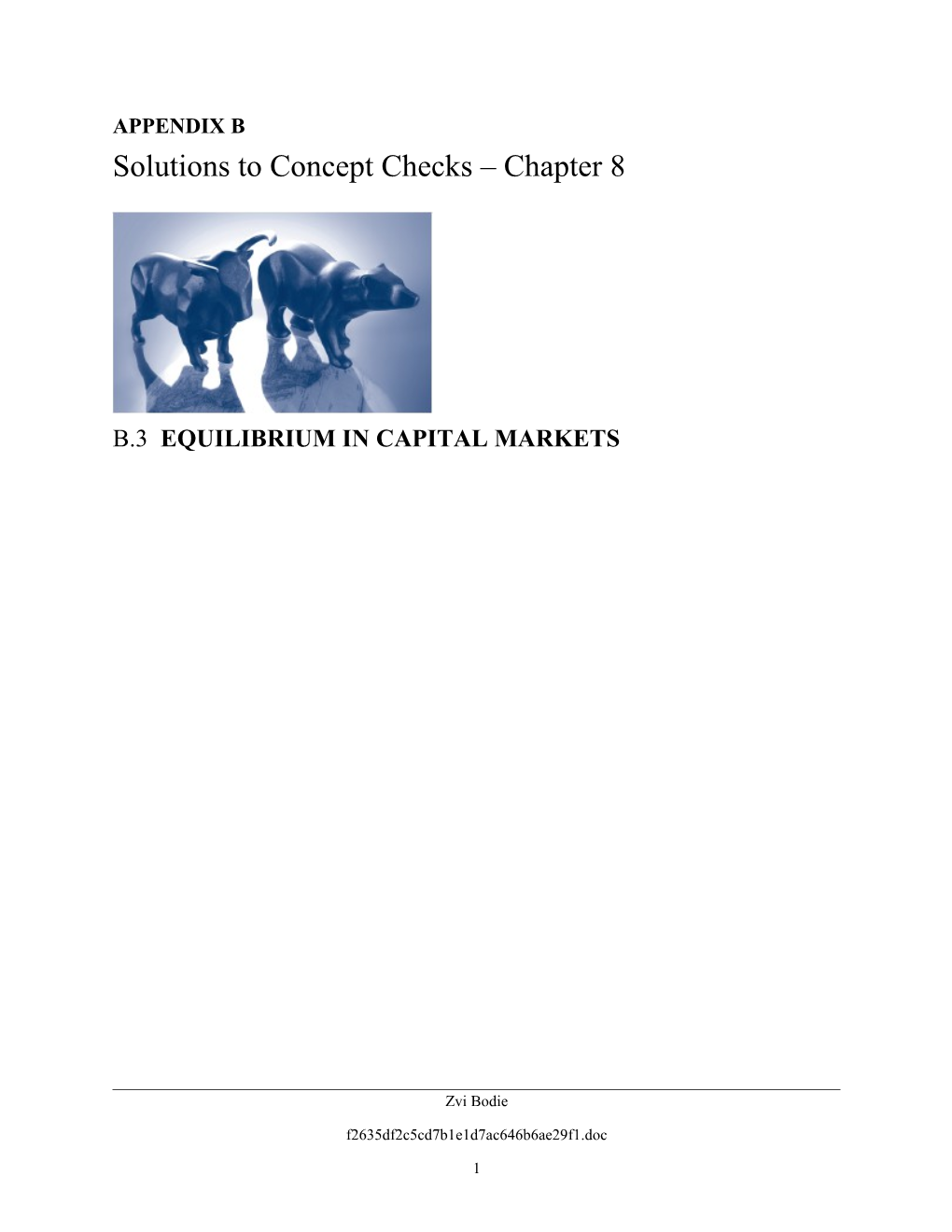Appendix B
Solutions to Concept Checks – Chapter 8
B.3Equilibrium in Capital Markets
Chapter 8—Index Models and the Arbitrage Pricing Theory
1.a.Total market capitalization is 3,000 1,940 1,360 6,300. Therefore, the mean excess return of the index portfolio is
b.The covariance between Stocks A and B equals
c.The covariance between Stock B and the index portfolio equals
d.The total variance of B equals
Systematic risk equals .22.252.0025
Thus the firm-specific variance of B equals
2.The variance of each stock is 2(e).
For stock A, we obtain
For stock B,
The covariance is
3.
Therefore
4.Nesbitt Burns’ alpha is related to the CAPM alpha by
For BCE, NB .52 percent, .20, and we are told that rf was .3 percent. Thus
BCE still performed well relative to the market and the index model. It beat its “benchmark” return by an average of .28 percent per month.
5.With these lower-risk premiums, the expected return on the stock will be lower:
6.Since we know thatthe nonsystematic variance is equal to , it becomes in each case equal to: a) .03; b) .003; c) .0003; d) .00003. The nonsystematic standard deviation is the square root of each one of these numbers, namely .17, .055, .017 and .0055 respectively. We conclude that the nonsystematic risk of large, diversified portfolios, measured by either variance or standard deviation, goes to zero as n increases.
7.a.This portfolio is not well-diversified. The weight on the first security does not decline as n increases. Regardless of how much diversification there is in the rest of the portfolio, you will not shed the firm-specific risk of this security.
b.This portfolio is well diversified. Even though some stocks have three times the weight as other stocks (1.5/n versus .5/n), the weight on all stocks approaches zero as n increases. The impact of any individual stock’s firm-specific risk will approach zero as n becomes ever larger.
8.A portfolio consisting of two-thirds of portfolio A and one-third of the risk-free asset will have the same beta as portfolio E, but an expected return of , less than that of portfolio E. Therefore one can earn arbitrage profits by shorting the combination of portfolio A and the safe asset and buying portfolio E.
9.The equilibrium return is E(r) rfP1 [E(r1) rf] P2 [E(r2) rf].
Using the data in Example 11.5,
10.a.For Alberta residents, the stock is not a hedge. When their economy does poorly (low energy prices), the stock also does poorly, aggravating their problems.
b.For Nova Scotia residents, the stock is a hedge. When energy prices increase, the stock will provide greater wealth with which to purchase energy.
c.If energy consumers (who are willing to bid up the price of the stock for its hedge value) dominate the economy, high oil-beta stocks will have lower expected rates of return than would be predicted by the simple CAPM.
Zvi Bodie
AppendixB
1
